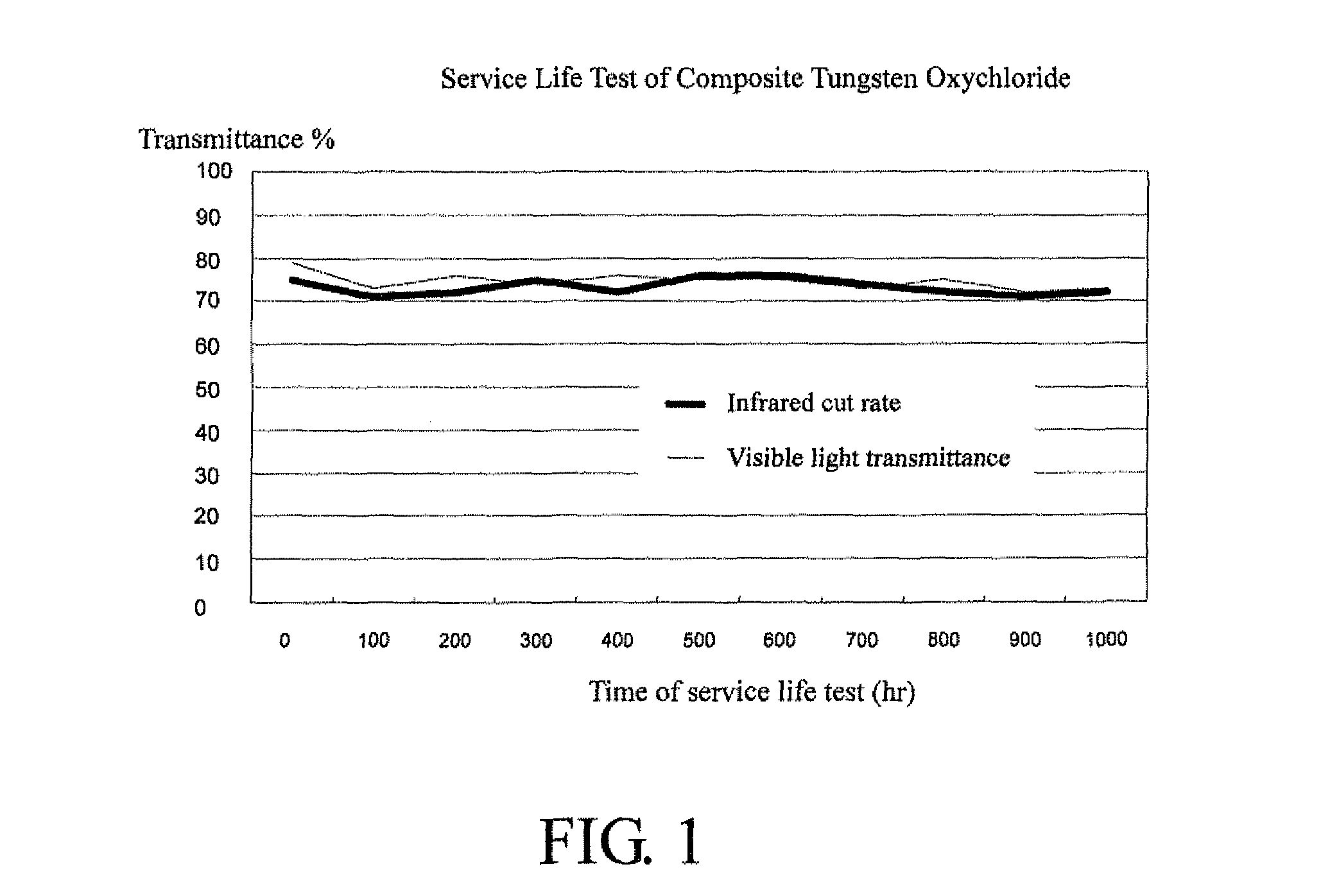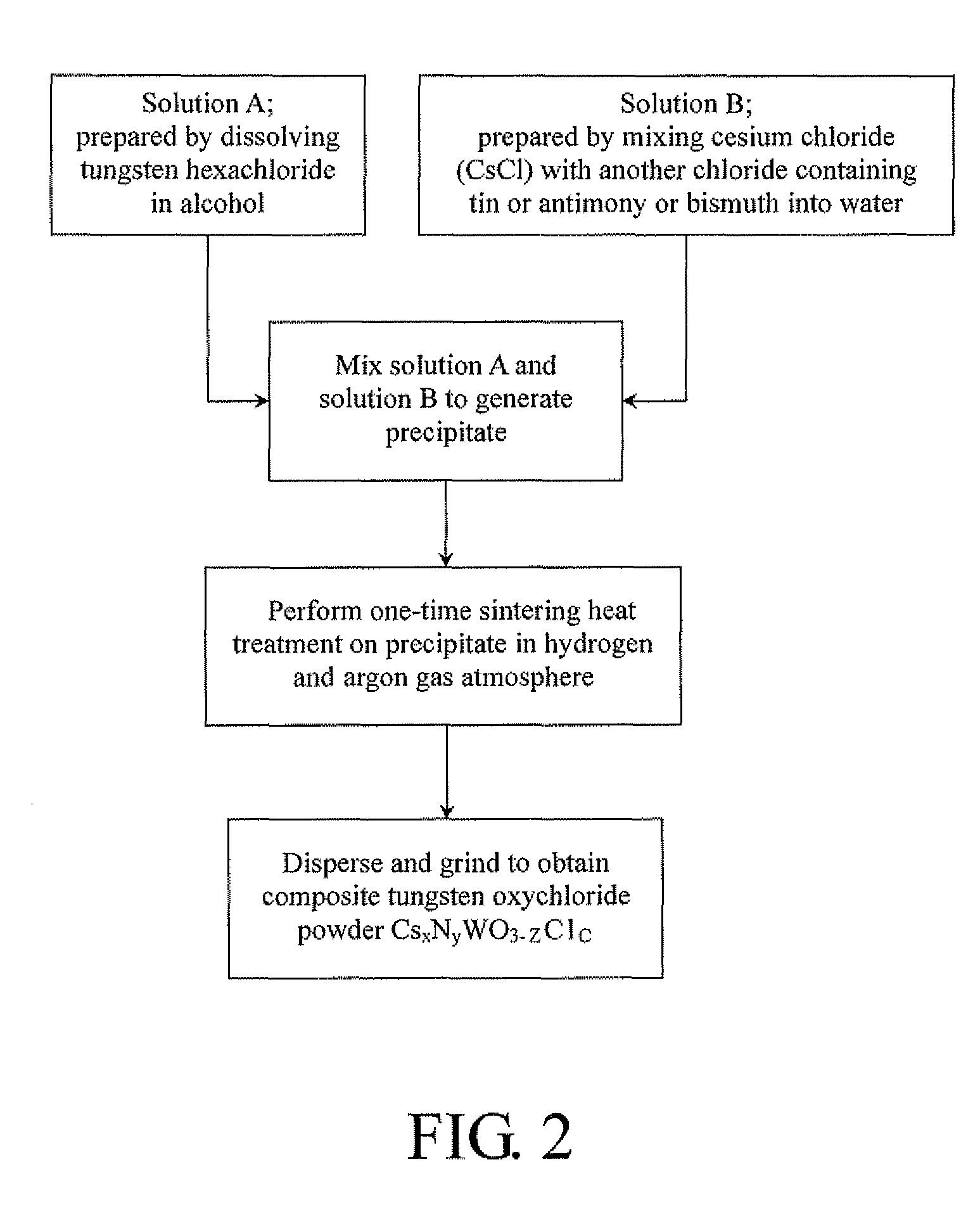Transparent heat-shielding material excellent in infrared-blocking properties and transparent heat-shielding film made of the same
a heat-shielding film and transparent technology, applied in heat-shielding, lighting and heating equipment, instruments, etc., can solve the problems of high manufacturing equipment cost and high production cost, add to complexity and cost of manufacture, end up defective, etc., and achieve outstanding infrared cut rate, simple manufacturing process, and reduced production cost
- Summary
- Abstract
- Description
- Claims
- Application Information
AI Technical Summary
Benefits of technology
Problems solved by technology
Method used
Image
Examples
embodiment 1
[0065]Tungsten hexachloride is mixed with alcohol to produce a blue solution A with a pH value of about 0. Cesium chloride (CsCl) and antimony trichloride (SbCl3) are mixed with water, with the ratio of cesium chloride (CsCl) to antimony trichloride (SbCl3) being 1 mole to 0.1 mole; thus, a transparent solution B is produced. The two solutions A and B are co-deposited to generate a precipitate. The chemical reaction formulas involved are as follows:
2WCl6+C2H5OH+3H2O→WOCl4↓WO2Cl2↓+6HCl+C2H5OH;
WOCl4↓+WO2Cl2↓+C2H5OH+CsCl+SbCl3+3H2O→2WO3↓+Cs++Sb+3+Cl−+6HCl+C2H5OH.
[0066]Following that, the precipitate is put into a high-temperature furnace into which argon gas and hydrogen gas are supplied at a specific flow rate. The temperature of the high-temperature furnace is increased from room temperature to 485-515° C. (the average temperature being 500° C.) at a temperature rising rate of 2° C. per minute, and the heat treatment continues for one hour.
[0067]After the heat treatment, a composite ...
embodiment 2
[0070]This embodiment is similar to embodiment 1 except that, when cesium chloride and antimony trichloride (SbCl3) are mixed with water to produce the transparent solution B, the ratio of cesium chloride to antimony trichloride (SbCl3) is 1 mole to 0.5 mole.
[0071]The transmittance of 300-2000-nm radiation through the resultant transparent heat-shielding film is tested, and the results are shown in Table 1.
embodiment 3
[0072]This embodiment is similar to embodiment 2 except that tin trichloride (SnCl3) is used in place of antimony trichloride (SbCl3) in preparation of the transparent solution B.
[0073]The transmittance of 300-2000-nm radiation through the resultant transparent heat-shielding film is tested, and the results are shown in Table 1. In addition, the results of the service life test are plotted in FIG. 1.
PUM
 Login to view more
Login to view more Abstract
Description
Claims
Application Information
 Login to view more
Login to view more - R&D Engineer
- R&D Manager
- IP Professional
- Industry Leading Data Capabilities
- Powerful AI technology
- Patent DNA Extraction
Browse by: Latest US Patents, China's latest patents, Technical Efficacy Thesaurus, Application Domain, Technology Topic.
© 2024 PatSnap. All rights reserved.Legal|Privacy policy|Modern Slavery Act Transparency Statement|Sitemap



